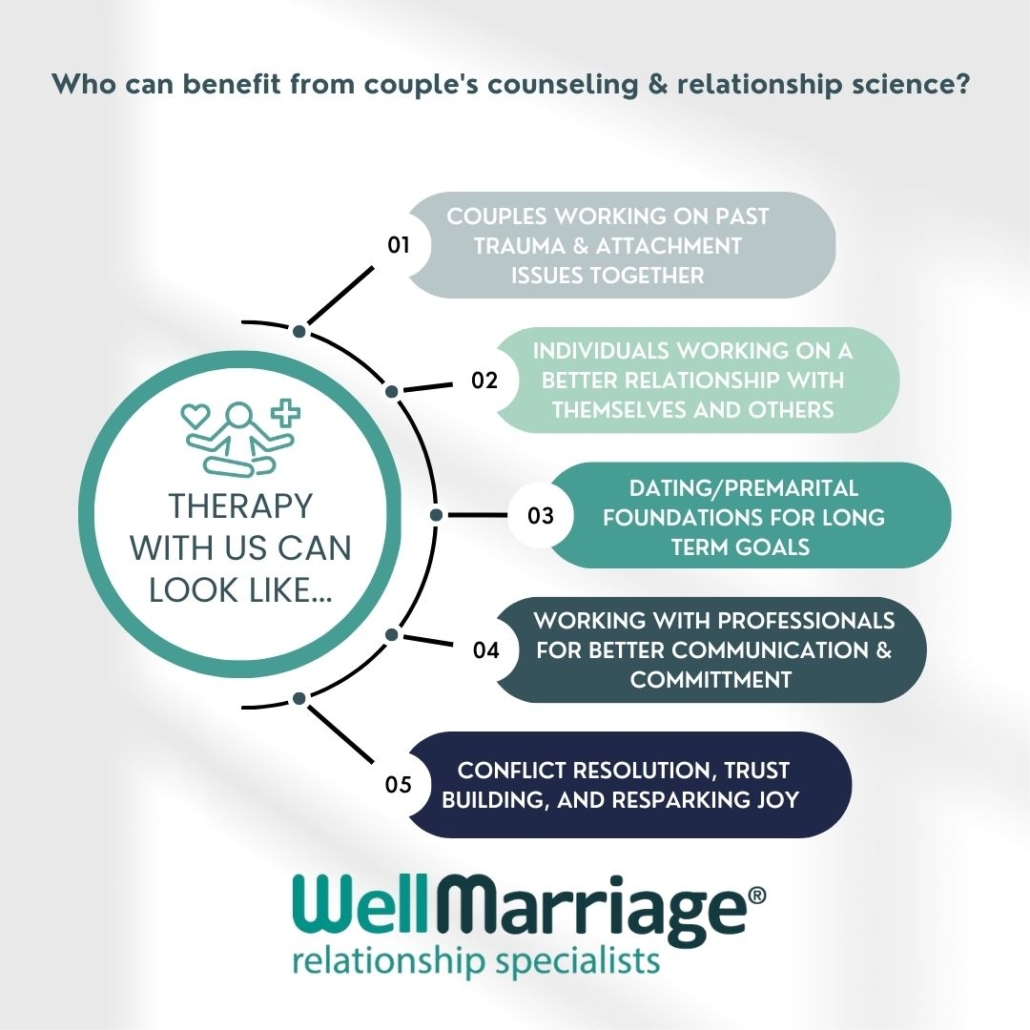Aim Point Counseling - An Overview
Table of ContentsThe Main Principles Of Aim Point Counseling What Does Aim Point Counseling Mean?Aim Point Counseling for DummiesSome Known Incorrect Statements About Aim Point Counseling More About Aim Point CounselingAim Point Counseling Can Be Fun For Anyone
The longitudinal style entails a pre-treatment survey and two follow-up studies at 3- and 12-months post-intervention. The study is established in eight Relationships Australia Victoria centres, throughout urban, outer residential areas, and regional/rural sites. Relationships Australia, a non-government organisation, is the largest service provider of pair counselling and relationship services in Australia.
These high rates of connection malfunction have actually been constantly linked with adverse wellness effects for both grownups and kids complying with divorce/separation.
A Biased View of Aim Point Counseling
The impacts of separation and separation can be destructive, research study indicates that high connection discord in undamaged pairs is likewise most likely to have adverse outcomes.
In addition, elements that affect the end results of these services require comprehensive examination. Research study to day has actually identified both pair and specific factors that may add to partnership discord. These include partnership satisfaction and commitment at the pair level, and clinical depression at the specific degree. Nevertheless, durable study to review relationship-enhancing interventions in the community are scarce.
Aim Point Counseling Things To Know Before You Buy
While the majority of studies suggest enhancements in partnership satisfaction following couple therapy, they are restricted by the examples and actions made use of, largely short-term follow-up time frameworks, and analyses that do not account for the dyadic nature of couple data., is one more frequently examined connection result.
To sum up, research study suggests that couple-specific variables along with private aspects might anticipate the results of pair counselling and relationship services. The causal instructions of these partnerships, nonetheless, is much less clear. These observations are necessary, considering that, to validate and assist the application of connection services such as couple coaching, empirical proof should check out both the outcomes of partnership solutions and the aspects that anticipate successful therapy.
, at least in some European countries.

We presently recognize little concerning the profiles of pairs who look for out relationship education contrasted with those who look for partnership therapy, or the end results of these programs. Anecdotal proof recommends that there might be considerable distress among at the very least some couples seeking partnership education. Connection education and learning programs differ from couple counselling as they are usually very structured, conducted in groups, and focus on a combination of 4 parts; awareness, comments, cognitive modification, and abilities training [45]
Unknown Facts About Aim Point Counseling
Comments includes individuals finishing surveys regarding their connection (e.g. steps of interpersonal troubles), and getting information on what their ratings suggest. Cognitive-behavioural methods promote transforming cognitions to help with positive partnerships. These may consist of promoting reasonable attributions/expectations around adverse companion behavior [46] Finally, in abilities training, couples attend talks or presentations on partnership skills, and practice these during facilitator-led activities [ 45]
These results have continued for up to 4 years in some studies [47] These meta-analyses highlight constraints in the current literary works on partnership education and learning. Particularly, the bulk of studies included pairs from top socio-economic backgrounds who were not experiencing high partnership discord [47,48] This example account may not represent customers that usually offer for relationship education.
Fascination About Aim Point Counseling

Very little study has actually taken a look at the comparative benefits of pair therapy and connection education programs. As customers are most likely to self-select into these service kinds, it is not clear whether characteristic partnership distress accounts present per solution type, or without a doubt whether there is a communication between offering profile, solution type and outcome.
(https://www.indiegogo.com/individuals/38481802)
Thus, we have consisted of a 12-month follow-up to evaluate longer-term patterns and impacts. The research study uses a number of standardized end result actions since some prior examinations have actually been criticised for their lack of standardised assessment [50] Ultimately, the usage of analytical analyses that think freedom of information, such as t-tests, or ANOVAs, has prevailed in previous studies helpful resources [ 44,49]
Consequently, we suggest to use multi-level statistical modelling treatments that control for the inter-dependence of pair information to assess any kind of therapy effects. The particular purposes of the ECC study are to: 1. Map accounts of clients looking for neighborhood agency-based pair therapy vs. partnership improvement programs in regards to socio-demographic and relationship indications (such as relationship contentment, partnership commitment, social problems, and factors for going to), along with health (such as clinical depression, general health and wellbeing) and health service usage (eg.
2. Identify whether pair counselling and connection education and learning services enhance 3- and twelve-month outcomes for connection satisfaction, commitment, and anxiety, making use of statistical analyses proper to pair data. 3. Figure out the loved one contributions of client aspects (specific and couple) and therapy/education aspects to end results at 3- and 12-months, and to sustainability of outcomes gradually.
The smart Trick of Aim Point Counseling That Nobody is Talking About
Multi-level modelling to establish pre-post distinctions, managing for dyadic (pair) degree. To add to the literary works examining the efficiency of community-based pair coaching. The results will certainly help scientific decision-making in community-based partnership service setups, and expert training. 3. To determine the relative payments of client/couple and treatment elements to outcomes at 3- and 12-months, and to sustainability of results over time.